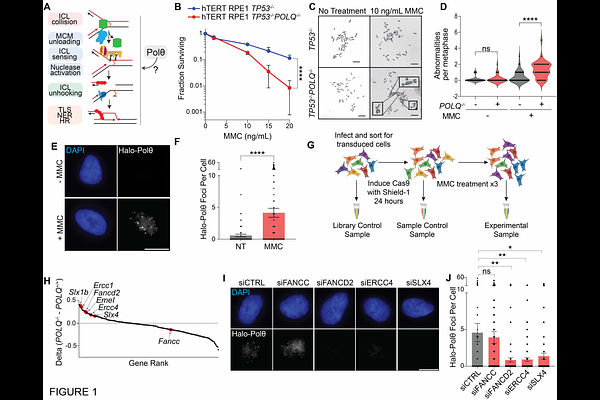Hierarchical Coordination of Polymerase Theta and RAD51 Resolves Clustered Replication Fork Collapse

Hierarchical Coordination of Polymerase Theta and RAD51 Resolves Clustered Replication Fork Collapse
Smith, C.; Simpson, D. A.; Guerra, P.; Feng, W.; Ellington, S. W.; Lu, D.; Fijen, C.; Boylston, N. M.; Chriuevella, K. K.; El-Shiekh, I.; Lee, R.; Wozny, A.-S.; Pregnall, A. M.; Eckenroth, B. E.; El-Sagheer, A. H.; Brown, T.; Doublie, S.; Ramsden, D. A.; Rothenberg, E.; Nik-Zainal, S.; Gupta, G. P.
AbstractThe essential role of polymerase theta (PolQ;)-mediated end joining (TMEJ), an alternative double strand break repair pathway, has been primarily studied in homologous recombination (HR)-deficient contexts(1, 2). Here, we uncover an indispensable role for TMEJ in HR-proficient mammalian cells during the repair of interstrand crosslinks (ICLs). We show that PolQ; is recruited downstream of canonical ICL repair steps - including ICL unhooking, RAD51 loading, and RAD51 ubiquitylation - and localizes to sites of unresolved HR through interactions with ubiquitylated RAD51 filaments. Using genomic scar profiling and targeted ICL repair assays, we find that TMEJ resolves a minor subset of lesions that are not amenable to HR repair, such as clustered ICLs that can induce two-ended replication fork collapse. These findings reveal a RAD51 ubiquitylation-dependent mechanism for PolQ; recruitment and establish TMEJ as a hierarchically deployed DNA repair pathway that safeguards genome stability when HR is insufficient to resolve replication-associated DNA damage.